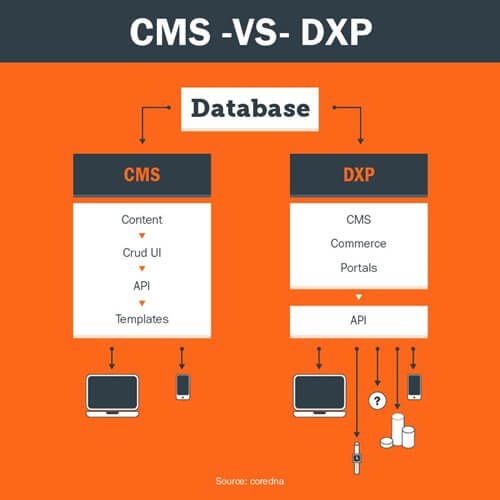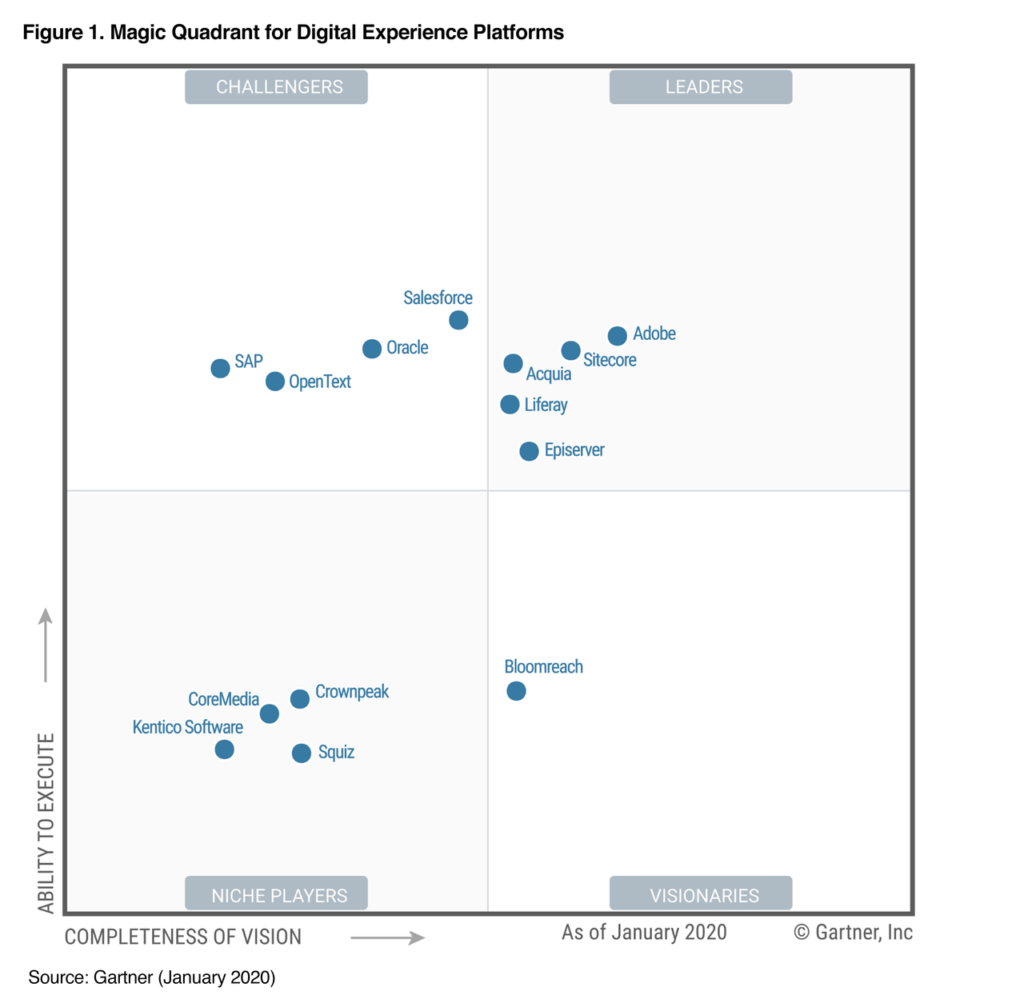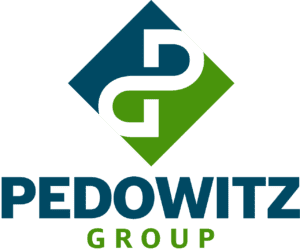Digital transformation is a key driver for customer experience. You know, we know, everyone knows it (probably). Businesses need to deliver a seamless digital experience to serve customers, and it needs to be immediate.
Customers expect instant gratification.
How you manage, organize and present the content on your website is crucial for building that gratification and leading to a successful digitally-oriented business.
And this isn’t just the case for B2C buyers … B2B buyers expect the same! In fact, 87% of B2B buyers want to self-serve part or all of their buying journey.
With the majority of the buying journey now happening online and over half without even speaking to a vendor, a traditional content management system (CMS) often won’t cut it.
You need more to grow digital revenue. And a digital experience platform (DXP) is the answer.
First, let’s talk through some basic elements about digital content and experience:
The Content Management System
A content management system is software that enables you to create and manage content on a website. WordPress, Squarespace, and Drupal are well-known examples – in fact, WordPress accounts for nearly 40% of all websites on its own!
The good thing about the CMS is that one no longer needs to be a developer to produce web content. The CMS empowers the basic content owners to own their content lifecycles.
Before the CMS came along, you’d need to know languages like HTML, CSS, JavaScript, and depending on the complexity of the site and server processing, back-end languages as well to get a website up; that, or have a full-time IT team ready to transform your mockups into web pages.
A CMS has two layers:
- The first is a content layer where you can create and update blog posts, product catalogs, videos, etc.
- The second is the code layer that governs the functionality of the platform.
A good system should separate these layers. This enables you to develop new functionalities for the platform independently without interfering with the content that you’ve already uploaded.
They enable you to customize the website with the basics alone, but you’ll encounter challenges such as high maintenance costs and complexity if you were to customize beyond the basics.
Your customers expect you to provide them with an exceptional customer experience. The content management system is capable of this. But it cannot deliver the sort of customer experience clients expect on its own and that’s where a digital experience platform or DXP comes into play.
How Is a DXP different from a CMS?
A Digital Experience Platform (DXP) is a software that helps firms undergoing a digital transformation to provide superior customer experiences. DXPs are quite similar to a CMS, but they are more advanced with integrated features targeted to managing those experiences.

They can integrate customer experience tools that come in handy in an era where businesses have to be customer-oriented to protect their market share.
Some elements that make DXPs different are:
- Multi-channel experience: Your customers have multiple devices through which they can access your website. They expect you to optimize the content for all these devices. DXPs help you adapt content for all these platforms.
- AI capabilities: The CMS primarily helps you to deliver content that is vital for the digital experience. A DXP does this too, but it goes further through automating the smart delivery of the content across IoT devices. DXPs provide a 360-view of your clients across different platforms hence they can use the analytics to create personalized experiences.
- Personalization: You are in a better position to improve the customer experience for your clients if you understand their needs. DXPs can prioritize content for your clients based on their attributes. It helps you deliver content that resonates with each client.
- Scalability: I can go a few ways on this, but for the moment let’s talk about back-end functionality. You can create new instances that run when needed without IT’s intervention. This is due to a dynamic architecture based on traffic and how users interact with your site … in other words, it can adjust based on your target market’s experiences!
Think of it this way: What makes for a good digital experience?
When everything makes the customer feel they’re important while giving them what they need.
But how you deliver that experience matters.
- A content management system enables you to write and organize content for your organization’s online presence.
- A digital experience platform enables you to personalize and integrate your content with other platforms for a better customer experience.
Which Should You Choose?
I’ve touched on both, but let me compare the two a bit further if you’re considering one vs. the other. Both certainly have their use cases – for instance, a small business will absolutely want a CMS, but global organizations looking to edge their competition should strongly consider the benefits of a DXP.
Why you should choose a CMS:
Easier out-of-the-box setup. For example, all you need is web hosting to get a typical WordPress site live.
Works with a small budget. They can be quite budget-friendly, especially for smaller businesses. And there’s a healthy market of developers who can work on literally anything with your site, with a bevy of plugins available to help solve many challenges you might have.
Easy user adoption. Nearly anyone with any web experience can use parts of the back-end functionality.
Why you should choose a DXP:
Global Scalability. Beyond the back-end details mentioned earlier, if you serve multi-lingual audiences, for example, a DXP will make going global more sustainable.
Asset Scalability and Speed. Upload one image, and your platform’s systems can generate a multitude of other image sizes, allowing you to easily provide faster on-site experiences (which matters). Leverage cloud-optimized storage also speeds this up and comes standard.
Strong customization. A CMS can get expensive quickly if you customize beyond the basics and lead to less-than-ideal site performance. Your digital experience platform is built to be designed for your specific needs and workflows while maintaining ideal performance.
Better security. Outdated plugins or instances lead to easy hacking opportunities, and a CMS that isn’t properly maintained creates openings.
Integrations. Simply installing a plugin won’t always do the trick. They can cause problems for other plugins + having too many begins to slow your site down – or even break it! DXPs are made for more complex marketing infrastructures.
Analytics. Curious what users interact with most on a high-value page? An analytics integration (which best-in-class DXPs have standard) provide that data!
Related: Our MarTech consulting makes sure you have the optimal stack no matter what technology you use, from DXP to MAP, CRM to ABM
The Leading DXPs

Adobe and Sitecore are some of the leading DXPs you could deploy in your digital transformation, according to Gartner’s research.
These DXPs combine capabilities from CMSs and marketing automation platforms to create multi-channel digital offerings that remain ahead of other market options.
Other DXPs to note include Acquia, Episerver, Oracle, IBM, BloomReach, and OpenText and have their own benefits. But having worked with multiple platforms listed, I’d have to say Gartner’s right: Two stand above the rest.
And I strongly feel that Adobe Experience Manager brings more to the table than the others – including Sitecore.
What Is Adobe Experience Manager?
Adobe Experience Manager (AEM) is a premium tool with an array of capabilities in a singular platform. It can help you manage your content, digital assets, digital enrollments, and even digital signage.
You can dive more into AEM with our blog on building its business case, which also includes migration tips for both marketing and IT to consider.
Here, I want to focus on the burning question you’re probably asking:
Why AEM?
There are a lot of tools that you can choose from in the marketplace. But, here’s a few reasons I much prefer AEM:
AEM’s digital asset management (DAM) tool has a superior architecture. The DAM is scalable, lightweight and it has excellent cloud capabilities – especially with Adobe’s cloud service offering that removes a lot of the burden of platform upgrades + provides stronger security checks integrated into your deployment process.
Working with other tools will require that you integrate the DAM as a separate solution – for instance, Sitecore added a DAM to their tool, but at the time of writing, they have several version iterations to go to match the features and capabilities of Adobe’s DAM (Adobe Assets).
Adobe’s comprehensive ecosystem is another huge plus.
- Their AI, Sensei, has been around for many years – it’s quite mature compared to many other market options.
- Audience Manager seamlessly works with AEM to create real-time personalization.
- The focus on holistic customer journeys is clear in their other product offerings, including journey analytics
Simply put, as we continue to harp on key needs for our clients as they continue to evolve and embrace revenue marketing, AEM is a tool that marketing operations can absolutely leverage to make it happen with best-in-class capabilities.
Let’s Get Technical
A CMS and DXP are certainly not alike. The former is powerful for creating content for your organization. The latter is powerful for creating and personalizing content across multiple platforms to give your business the online presence it deserves.
In today’s world, organizations must have a multi-channel digital experience to keep and grow customers.
A CMS won’t suffice for enterprises in a cutthroat marketplace that continues to become the buyer’s playground.
Those orgs need a DXP to meet your customer where they expect you to be … or risk failing to make the impression you need in a world of endless digital clutter and never-ending innovation.
Convinced? Then read more:
- Build your business case and have IT and marketing aligned for an AEM migration
- New to AEM? Head over to our getting started guide and level up
- Learn about our AEM consulting services for transforming how you digitally interact with customers
Still unsure, or have questions? I’m happy to connect on LinkedIn, and I also strongly recommend you reach out to Katelyn Booth as well!
